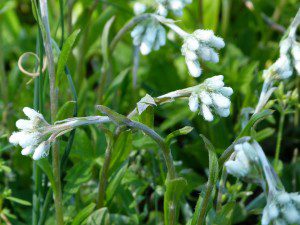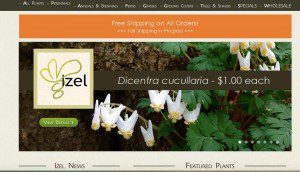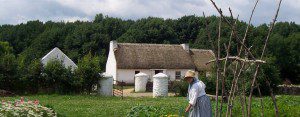Posts Tagged ‘native plants’
A New Native Plant Mini Series on YouTube
Introducing a new series of videos! These are truly Mini in length, but mighty in content; each featuring one or two native plants at a time. Plant characteristics, faunal associations, and uses in the home landscape are covered. We think you will love these informative little doses of native love! The producer, a member of…
Read MoreFundraiser Celebration In Richmond
Governor McAuliffe expressed great appreciation as he accepted our ‘Big’ check from a VNPS Elf on December 17 in Richmond. President Nancy Vehrs had pulled out all the stops to make sure the event was a memorable one! The VNPS 2015 Fundraiser was a resounding success, by any measure; we were able to give $22,…
Read MoreInterview with Izel Plants: An Online Nursery
The newest nursery listing on our VNPS website is Izel Plants; a retail nursery of a different stripe! Find out all about how it works in this interview with Claudio Vazquez, who is the co-owner, and co-founder of this brave new enterprise. Sue: Claudio, when I heard about your retail nursery, which is an online…
Read MoreFinding and Losing Ginseng
One of the highlights for me of this year’s VNPS Annual Meeting was the opportunity to explore a colony of ginseng (Panax quinquefolius L.). On a walk led by Tom Dierauf, our congenial group explored the plants and geology of the Blue Ridge Mountains and the eastern edge of the Shenandoah Valley. Walking off-trail and…
Read MoreRaise Your Voice
A conviction that native plants are important is what motivated Ruth Douglas to raise her voice. Deciding to become active in their support was not an easy choice for Ruth, who had to overcome an inherently shy personality, but it’s a decision she does not regret. Her journey through deeper levels of commitment has given her…
Read MoreReport From A Tagalong Spouse
Hosting the VNPS Annual Meeting at the Frontier Culture Museum was a great choice. If you haven’t been to the museum, it consists of about twelve exhibits of typical homesteads, (houses, barns, fields, etc.), of the people who originally inhabited North America, including the American Indians and those people who immigrated to the Atlantic coast…
Read MoreNative Moths, Native Plants, Natural Connections
My interest in natural history started with birds – their form, color, shapes, and diversity fascinated me! But then in 1981 I got my Newcomb’s Wildflower Guide and that was all she wrote! Plants were my new love – like birds, there was form, color, shape, and diversity; unlike birds, they kept still! I could…
Read MorePlant Profile: Horseweed, Conyza canadensis
The common name may refer to the size of this plant, a robust, coarse summer annual in the Aster Family. Horseweed grows 1 to 6 feet tall on a stout stem often covered with long white hairs. There are a lot of narrow leaves crowded on the stem, which becomes branched near the top. …
Read MoreManage White-Tailed Deer to Protect Our Natural Heritage
Most residents of Virginia understand the need to change human land use practices to stop or minimize habitat destruction and preserve our native plant communities. An increasing number of people also support combating the spread of non-native invasive species to include problem plant species and insects such as the emerald ash borer beetle which girdles…
Read MoreHope and Reality for Urban Ecosystems
Years ago, I served on Maryland’s Plant Reintroduction Task Force, which was largely convened to address the merits, legal ramifications, and biological soundness of reintroducing rare taxa “recently lost from its historic range” or to enhance dwindling populations that remained in their historic natural settings (PRTF 1999). Specifically at the time, this involved a proposal…
Read More




